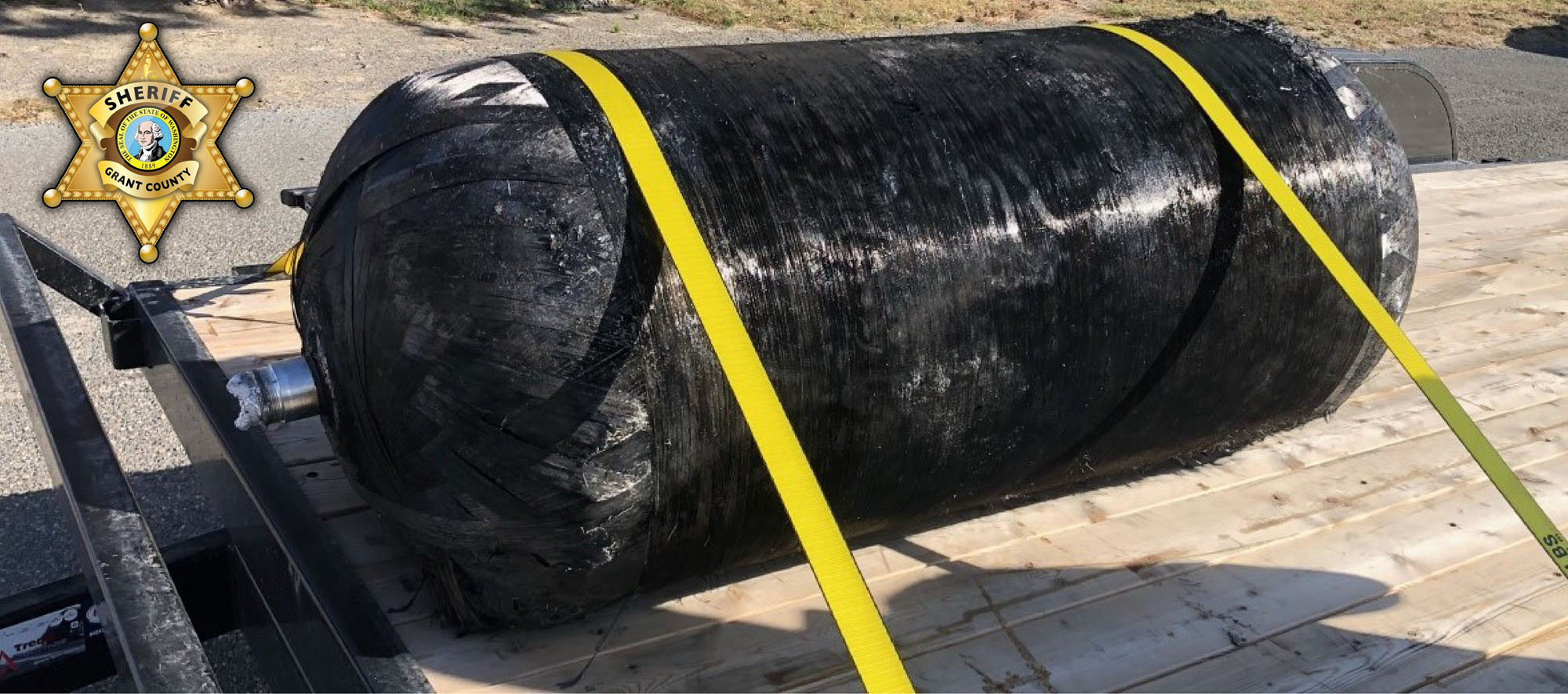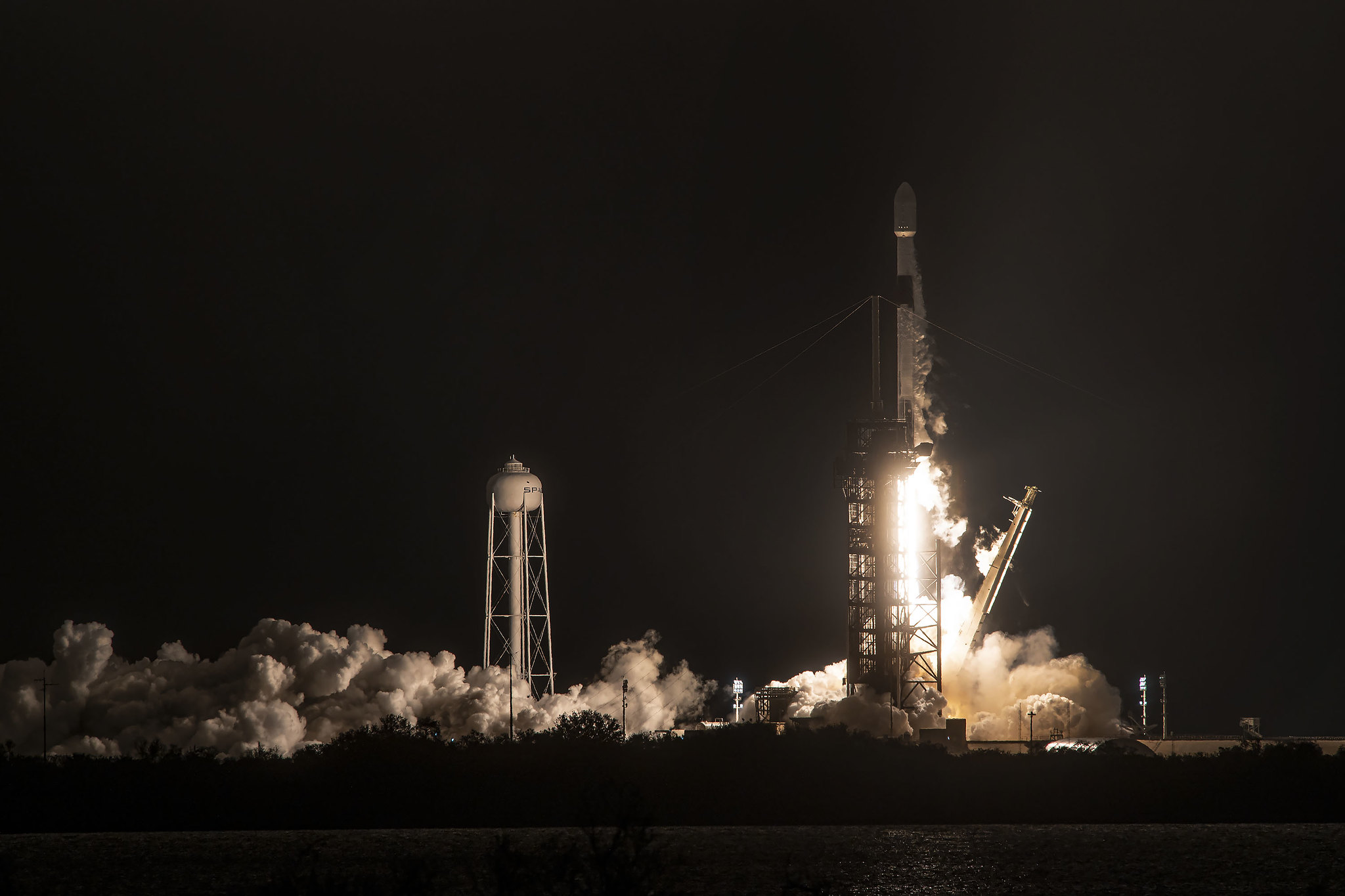Debris from SpaceX rocket launch falls on farm in central Washington

A piece of debris from a SpaceX launch has turned up on someone's farm in central Washington, local authorities reported Friday (April 2) — about one week after the falling rocket debris sparked reports of "shooting stars" the U.S. Pacific Northwest.
According to the Grant County Sheriff's Office, the recovered object appears to be a composite overwrapped pressure vessel, or COPV, belonging to the second stage of the Falcon 9 rocket that launched March 4 from NASA's Kennedy Space Center in Florida, on a mission dubbed Starlink 17.
"SpaceX recovered a Composite-Overwrapped Pressure Vessel from last week’s Falcon 9 re-entry. It was found on private property in southwest Grant County this week," the Grant County Sheriff's Office wrote in a statement on Twitter, adding that they would not provide the exact location or the name of the man whose property it fell on.
"Media and treasure hunters: we are not disclosing specifics. The property owner simply wants to be left alone," the sheriff's office said in the tweet.
Related: Falling SpaceX debris puts on a light show in the sky
Although Falcon 9 rocket successfully delivered 60 Starlink satellites to orbit last month, the rocket's second stage didn't deorbit properly after completing the mission. The second stage is the smaller, upper part of the Falcon 9 rocket that separates from the main booster to take satellites to their intended orbit.
While the main booster returns to Earth for a landing (so SpaceX can refurbish and reuse it on future launches), once the second stage has completed its role in the mission, it is either intentionally destroyed or left to linger in orbit. Typically it conducts a "deorbit burn" that sends the craft on a safe trajectory to burn up in the atmosphere above the Pacific Ocean.
Get the Space.com Newsletter
Breaking space news, the latest updates on rocket launches, skywatching events and more!

But this time, something went wrong: According to Ars Technica, "there was not enough propellant after this launch to ignite the Merlin engine and complete the burn. So the propellant was vented into space, and the second stage was set to make a more uncontrolled re-entry into the atmosphere."
So, instead of burning up over the ocean, the rocket stage ended up breaking up in the sky over the Pacific Northwest — the fiery display visible not only from Washington but also from surrounding states and parts of Canada — just after 9 p.m. local time on Thursday, March 25, or midnight EDT (0400 GMT) on Friday, March 26.
The COPV discovered this week on the farm in southwestern Grant County is about 5 feet (1.5 meters) long, and it left an impact mark on the ground about 4 inches to 5 inches (10-13 centimeters) deep, NBC News reported. COPVs are used to store helium to pressurize the propellant tanks of the Falcon 9's upper stage.
SpaceX did not immediately respond to a request for comment. Space.com will provide updates as this story develops.
Follow us on Twitter @Spacedotcom and on Facebook.
Join our Space Forums to keep talking space on the latest missions, night sky and more! And if you have a news tip, correction or comment, let us know at: community@space.com.

Hanneke Weitering is a multimedia journalist in the Pacific Northwest reporting on the future of aviation at FutureFlight.aero and Aviation International News and was previously the Editor for Spaceflight and Astronomy news here at Space.com. As an editor with over 10 years of experience in science journalism she has previously written for Scholastic Classroom Magazines, MedPage Today and The Joint Institute for Computational Sciences at Oak Ridge National Laboratory. After studying physics at the University of Tennessee in her hometown of Knoxville, she earned her graduate degree in Science, Health and Environmental Reporting (SHERP) from New York University. Hanneke joined the Space.com team in 2016 as a staff writer and producer, covering topics including spaceflight and astronomy. She currently lives in Seattle, home of the Space Needle, with her cat and two snakes. In her spare time, Hanneke enjoys exploring the Rocky Mountains, basking in nature and looking for dark skies to gaze at the cosmos.









